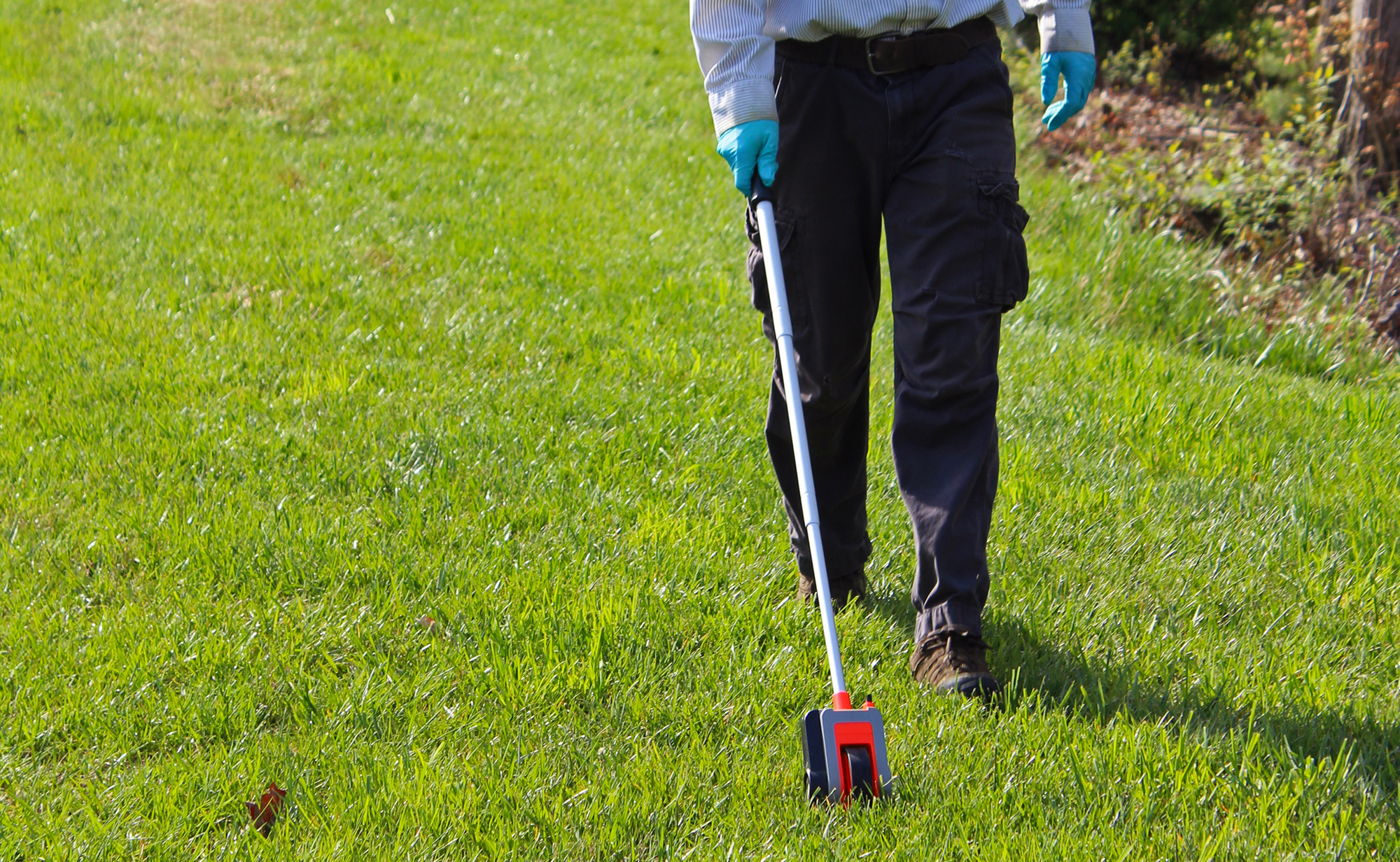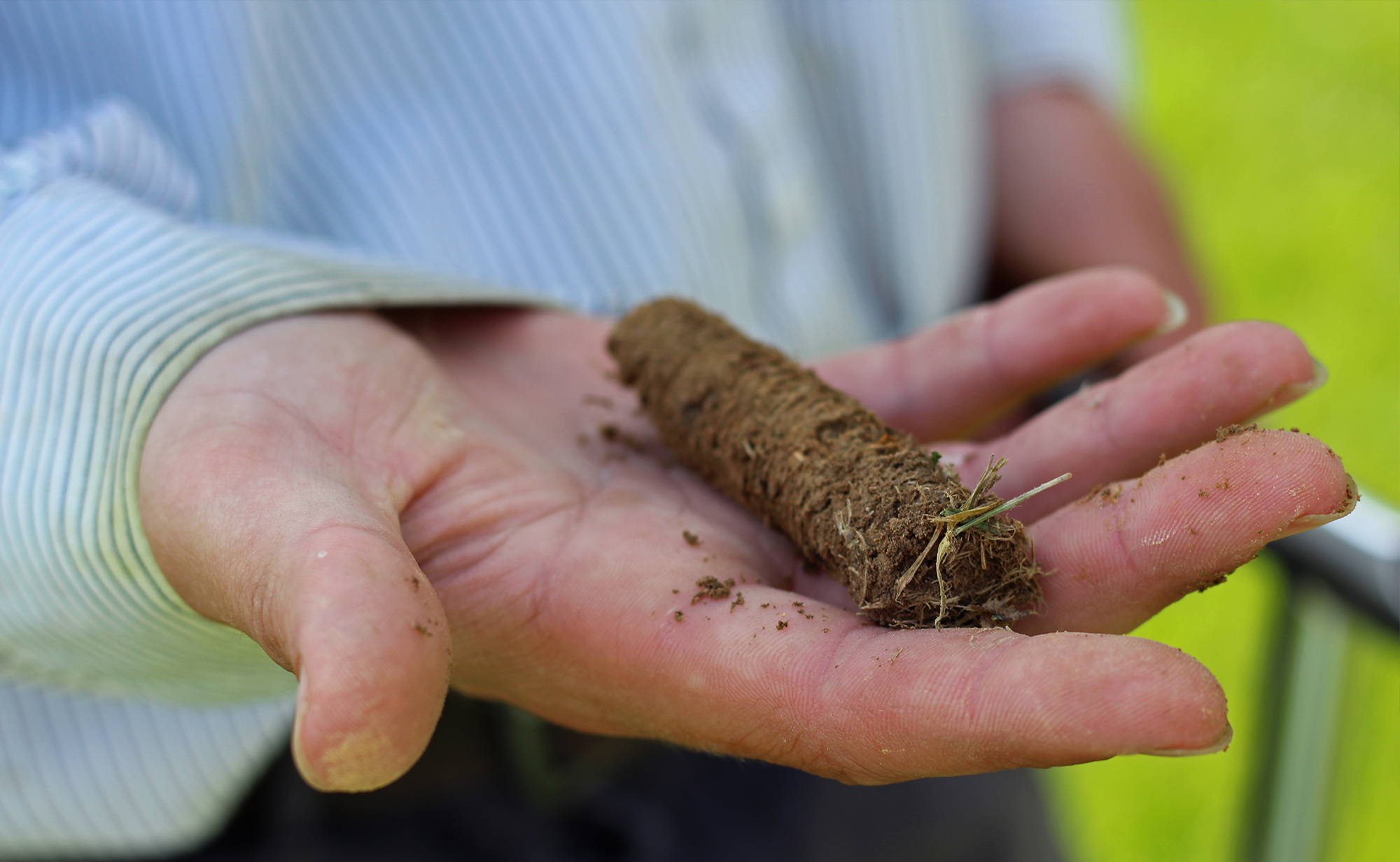Customized Weed Control & Fertilizing Service for Your Lawn: How It Works
Through our personalized fertilization and weed control programs, we work with you to meet your goals for your lawn and landscape. Here’s how it works:
Step 1: Site Visit
Site Visit
Our client-centered process begins with a visit to your home. We come out to your site to measure and inspect your lawn. While there, we are able to identify any weed pressures or problem areas that are present and discuss the history of the lawn with you and any other concerns you may have. We talk to you about your goals and let you know the treatment recommendations available to you based on those goals, as well as the condition of your turf.
We often recommend a complete graphical soil analysis. Each soil analysis is comprised of 25 to 30 subsamples, which we will take from each area of interest at your site. These are mixed together and sent to the lab for analysis. The results and our recommendations are then sent to you. This soil analysis costs $30, and the results are yours to keep.
Step 2: Creating Your Custom Program
Your Custom Program
Based on your soil test results and our analysis at the site visit, we create a fertilization and weed control program customized to fit your needs and goals. These programs can range from 4 to 6 visits per year.
The cost of our programs are based on several factors:
- Your goals for your turf areas
- The size of the lawn to be managed
- What pests are present, such as certain weeds or grubs
- If needed, cultural items such as core aeration, overseeding, and lime applications
All of these factors are priced into the program. Our programs are designed to meet your goals and to be priced competitively with do-it-yourself products. For example, our basic program consists of five visits per season. These visits will control crabgrass and broadleaf weeds, and provide all needed fertilization for the turf area. On a quarter acre lot (10,000 ft2) this program will run around $55 per visit, or $275 per season.
Step 3: Treating Your Site Throughout the Year
Treating Your Site
Using our environmentally sustainable products, we treat your site throughout the year according to your customized plan. Each visit through the year is designed to address a particular lawn issue. During the early spring, we focus on preventing crabgrass and in the later spring, we focus on preventing broadleaf weeds. In the fall we fertilize. Our programs are designed to apply 75% of the fertility needed during the fall. This helps to build turf roots, giving you a healthier lawn next season.
We will continue to work with your lawn and landscape to achieve your desired results, and if at any time you are not satisfied with our service, we will come back to your property and re-treat your lawn area at no cost to you.

Our client-centered process begins with a visit to your home. We come out to your site to measure and inspect your lawn. While there, we are able to identify any weed pressures or problem areas that are present and discuss the history of the lawn with you and any other concerns you may have. We talk to you about your goals and let you know the treatment recommendations available to you based on those goals, as well as the condition of your turf.
We often recommend a complete graphical soil analysis. Each soil analysis is comprised of 25 to 30 subsamples, which we will take from each area of interest at your site. These are mixed together and sent to the lab for analysis. The results and our recommendations are then sent to you. This soil analysis costs $30, and the results are yours to keep.

Based on your soil test results and our analysis at the site visit, we create a fertilization and weed control program customized to fit your needs and goals. These programs can range from 4 to 6 visits per year.
The cost of our programs are based on several factors:
- Your goals for your turf areas
- The size of the lawn to be managed
- What pests are present, such as certain weeds or grubs
- If needed, cultural items such as core aeration, overseeding, and lime applications
All of these factors are priced into the program. Our programs are designed to meet your goals and to be priced competitively with do-it-yourself products. For example, our basic program consists of five visits per season. These visits will control crabgrass and broadleaf weeds, and provide all needed fertilization for the turf area. On a quarter acre lot (10,000 ft2) this program will run around $55 per visit, or $275 per season.

Using our environmentally sustainable products, we treat your site throughout the year according to your customized plan. Each visit through the year is designed to address a particular lawn issue. During the early spring, we focus on preventing crabgrass and in the later spring, we focus on preventing broadleaf weeds. In the fall we fertilize. Our programs are designed to apply 75% of the fertility needed during the fall. This helps to build turf roots, giving you a healthier lawn next season.
We will continue to work with your lawn and landscape to achieve your desired results, and if at any time you are not satisfied with our service, we will come back to your property and re-treat your lawn area at no cost to you.
Get Started Today!
Other Frequently Asked Questions
Check out the answers to some FAQs we get from current and prospective clients.
